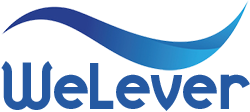Liability insurance can be a complex area to navigate due to its numerous components and varying applications. Understanding the essential aspects that determine the scope and effectiveness of liability insurance is crucial for organizations, especially those operating in industries with a heightened risk factor. In this comprehensive guide, we’ll delve into the critical aspects of liability insurance, exploring what makes coverage effective and the factors businesses should prioritize when selecting a policy.
Understanding Liability Insurance and Its Importance
Liability insurance is a critical component of risk management strategies for both individuals and businesses. It helps protect the insured from the risks of liabilities imposed by lawsuits and similar claims, and is particularly important for businesses with exposure to liability risks. This type of insurance can cover legal costs and any payouts for which the insured party might be responsible if found liable.
The importance of liability insurance amplifies when you consider industries that involve direct contact with the public or high-risk services. For instance, healthcare providers, construction companies, and product manufacturers often require more comprehensive liability insurance to safeguard against potential claims. By understanding liability insurance’s fundamental importance, businesses can more effectively evaluate and select coverage that fits their needs.
Key Types of Liability Insurance
There are several forms of liability insurance, each catering to different needs and exposures. Some of the most common types include general liability insurance, professional liability insurance, and product liability insurance. General liability insurance covers common risks, such as bodily injury and property damage, while professional liability insurance, also known as errors and omissions insurance, provides protection against claims resulting from services rendered negligently.
Professional liability insurance is vital for individuals and businesses that offer professional services or advice. For example, healthcare professionals in Louisiana can benefit from Louisiana professional liability coverage, which shields them against malpractice claims. Product liability insurance, on the other hand, protects manufacturers and sellers against claims related to product defects that cause injury or damage.
The Role of Employee Safety in Liability Insurance
Employee safety is an integral factor for employers seeking to mitigate liability risks. By implementing robust safety measures, organizations can reduce the likelihood of workplace accidents and the resultant liability claims. Prioritizing employee safety not only enhances workplace morale and productivity but also serves as a proactive strategy to minimize insurance costs.
In Louisiana, several solutions are available to help businesses strengthen their safety protocols. For instance, employee safety solutions in Louisiana offer comprehensive strategies to maintain a safe work environment. These solutions focus on identifying potential hazards, providing training, and establishing preventive measures, which are essential steps in lowering liability risks.
Navigating Claims and Legal Assistance
Dealing with liability claims can be daunting, especially for businesses lacking experience in handling such matters. It’s crucial to have a plan in place for navigating claims effectively. This includes knowing how to report incidents timely, understanding the claim process, and collaborating with insurers and legal experts to resolve claims efficiently.
Legal assistance plays a critical role in liability claims, as legal counsel can guide businesses through the complexities of legal proceedings and ensure compliance with regulations. Having reliable legal support can significantly influence the outcome of claims and contribute to a more favorable resolution.
The Connection Between Organizational Safety and Liability Reduction
Beyond individual employee safety, organizational safety encompasses a broader perspective in reducing liability risks. A comprehensive safety strategy should involve risk assessments, regular audits, and continuous improvements to workplace safety. Such diligence not only enhances the well-being of employees but also significantly curtails potential liability claims against the organization.
Businesses in Louisiana can explore Louisiana organizational safety solutions to fortify their safety protocols further. Implementing these solutions can help organizations establish risk management frameworks that proactively address safety concerns and substantially reduce liability risks.
Factors Influencing Liability Insurance Costs
Understanding what influences liability insurance costs can aid businesses in securing the most cost-effective and comprehensive coverage. Typically, factors such as the industry type, business size, and claims history significantly impact insurance premiums. High-risk industries or businesses with a history of frequent claims might face higher premiums.
Additionally, the extent of coverage and policy limits can also affect costs. Companies should carefully assess their liability risk profile and choose policy limits that provide adequate protection without unnecessary expense. Engaging with an insurance advisor to review and tailor coverage can be invaluable in managing these costs effectively.
Choosing the Right Liability Insurance Provider
Selecting an appropriate liability insurance provider is a decision that can have long-lasting implications for a business’s financial health. It’s essential to assess potential providers based on their financial stability, coverage options, and customer service reputation. Businesses should conduct thorough research and possibly consult industry peers or online reviews to gather insights on various insurers.
Furthermore, working with a provider that specializes in your industry can offer more tailored solutions and a deeper understanding of the specific risks involved. A specialized insurer can also potentially offer risk management resources and guidance to help reduce exposures and claims likelihood.
The Future Outlook of Liability Insurance
As industries evolve, so too does the landscape of liability insurance. Emerging technologies and shifting regulatory environments are changing the risk landscape, requiring insurers and insureds alike to adapt. For instance, the rise of digital and remote operations has introduced new liability risks associated with cybersecurity and virtual interactions.
Looking ahead, businesses must remain vigilant and proactive in understanding these changes and how they impact liability exposures. Engaging in continuous education about insurance products and trends will help organizations remain adequately protected and resilient in the face of emerging risks.
In conclusion, liability insurance is an indispensable aspect of any comprehensive business risk management strategy. By understanding the critical elements that influence coverage and tailoring a policy to fit specific needs, businesses can protect themselves against potential liabilities effectively. While challenges will inevitably arise in this dynamic area, informed decision-making and robust risk management can help businesses navigate the complexities of liability insurance successfully.
